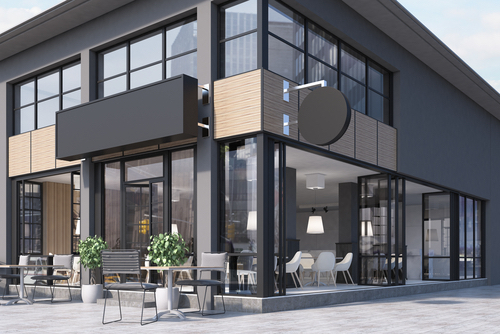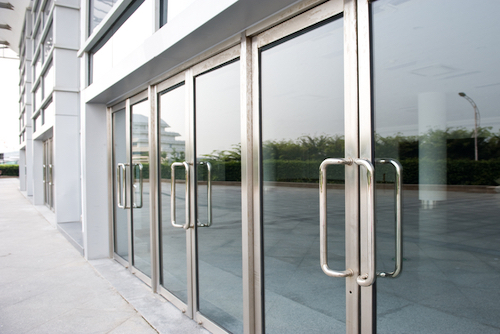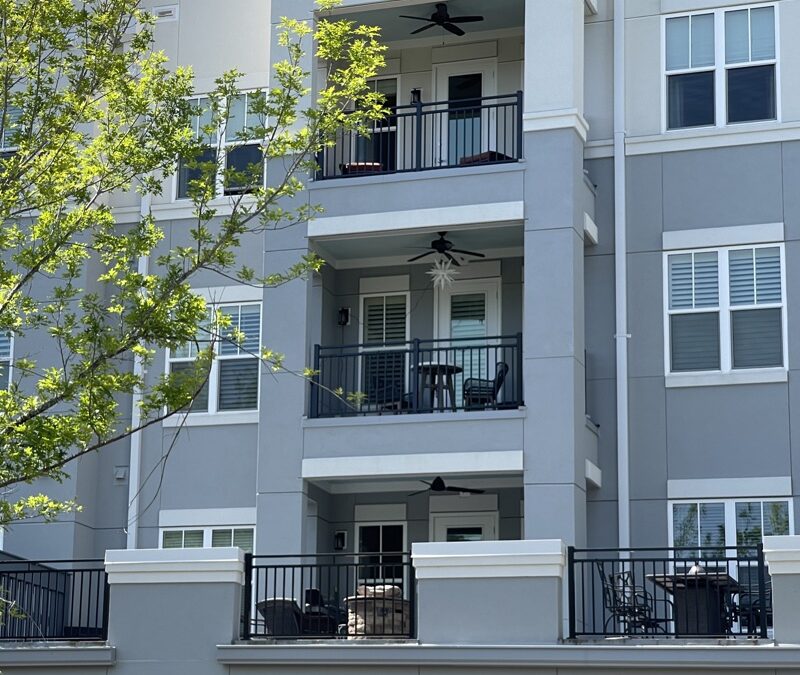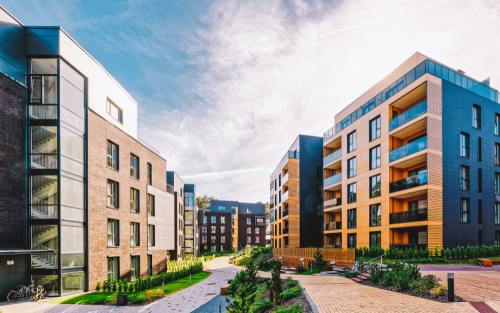Introduction to Energy-Efficient Windows
In the quest for sustainability and cost savings, energy efficiency in multi-family homes has become a paramount concern for property owners and managers. Installing energy-efficient windows is one of the most impactful ways to enhance a building’s energy efficiency. These windows are crucial in reducing energy consumption and improving our spaces’ overall comfort and livability.
Energy-efficient windows are designed to keep the desired temperature in your home more consistent. During winter, they reduce the amount of heat that escapes; in the summer, they limit the heat that enters. This thermal regulation is achieved through advanced technologies, including special coatings and improved frame materials, which significantly reduce energy bills and carbon footprints.
The importance of energy efficiency in multi-family homes cannot be overstated. These buildings, which house multiple families, have a substantial energy footprint. Heating, cooling, and lighting these spaces can account for a significant portion of a property’s operational costs. Property owners can save energy costs considerably by investing in energy-efficient windows, enhancing residents’ comfort, and contributing to environmental conservation efforts.
A key benchmark for assessing the energy efficiency of windows is the ENERGY STAR standards set by the U.S. Environmental Protection Agency (EPA). ENERGY STAR-qualified windows meet strict criteria for energy performance, ensuring they are among the most efficient on the market. These windows feature innovations such as double or triple panes of glass filled with inert gas and low-emissivity (low-E) coatings that reflect infrared light, keeping heat inside in winter and outside in summer. Additionally, the frames are designed to offer superior insulation, further enhancing the window’s ability to maintain temperature control.
Choosing ENERGY STAR-qualified windows for multi-family homes is a wise investment in the building’s energy efficiency, resident satisfaction, and environmental stewardship. These windows contribute to significant energy and cost savings and support a more sustainable future by reducing greenhouse gas emissions. As we seek ways to live more sustainably, the role of energy-efficient windows in our buildings remains crucial.
Understanding Energy-Efficient Windows
The transition towards more sustainable living and reducing energy consumption has led to significant advancements in window technology. Energy-efficient windows are at the forefront of this movement, reducing energy costs and significantly enhancing home comfort. To understand how these windows achieve such efficiency, it is essential to delve into their anatomy and the innovative components that set them apart from standard windows.
Anatomy of an Energy-Efficient Window
Double or Triple Panes of Glass: One of the most notable features of energy-efficient windows is the use of multiple panes of glass, typically two or three, compared to the single pane found in older windows. This design creates a barrier that reduces heat transfer, helping to keep warm air inside during the winter and outside during the summer.
Inert Gases: The spaces between the panes in energy-efficient windows are filled with inert gases, such as argon or krypton. These gases are denser than air, providing better insulation by reducing the convection currents within the window. This further decreases the window’s thermal transfer, enhancing its insulating properties.
Low-Emissivity (Low-E) Glass: Low-E glass is coated with a thin metallic layer that reflects infrared energy (heat) while allowing visible light to pass through. In winter, the coating reflects interior heat into the room; in summer, it reflects exterior heat away from the house. This selective reflection helps maintain consistent indoor temperatures, reducing the need for heating and cooling.
Frame Materials: The material of the window frame plays a crucial role in its overall energy efficiency. Energy-efficient windows often use vinyl, fibreglass, wood, or composite frames to offer better insulation. These materials do not conduct heat as much as traditional aluminium frames, contributing to the window’s ability to prevent heat loss or gain.
Spacers: Spacers keep the panes of glass apart at the correct distance. In energy-efficient windows, spacers are designed to minimize heat transfer and prevent condensation between the panes. They often contain a desiccant that absorbs moisture trapped in the air space during manufacturing, ensuring the window’s clarity and insulation performance.
Contribution to Energy Efficiency
Each component of an energy-efficient window works in harmony to reduce energy consumption. By minimizing heat transfer, these windows help maintain a more consistent indoor temperature, leading to less reliance on heating and cooling systems. This results in significant energy and cost savings and contributes to a more comfortable and sustainable living environment. Integrating advanced materials and technologies in energy-efficient windows represents a critical step forward in building design, offering a practical solution to energy conservation and climate control challenges in modern homes.
Benefits of Installing Energy-Efficient Windows
Installing energy-efficient windows in multi-family homes brings many benefits, from enhanced living comfort to significant financial savings. These windows are an investment in a property’s value and a commitment to a more sustainable and cost-effective future. Here are the key advantages of switching to energy-efficient windows.
Improved Thermal Comfort
One of the most immediate benefits of energy-efficient windows is the noticeable improvement in thermal comfort within the home. These windows maintain a consistent indoor temperature by minimizing the drafts and cold spots familiar with older, less efficient windows. In winter, they keep the warmth inside, and in summer, they reflect the heat outside, ensuring that residents can enjoy their living spaces without the discomfort of extreme temperatures.
Reduction in UV Damage
Energy-efficient windows are equipped with coatings that reduce the amount of ultraviolet (UV) and infrared light entering the home without compromising natural light. This protection against UV light helps prevent the fading and deterioration of furniture, carpets, and artwork, extending the life of these items and preserving the interior aesthetics of the home.
Energy and Cost Savings
The primary advantage of energy-efficient windows is their potential to reduce energy consumption significantly and utility bills. By improving thermal insulation, these windows decrease the need for heating in the winter and air conditioning in the summer. The exact savings can vary based on geographic location, window type, and the specific energy rates in the area. However, homeowners can expect to save between 7% to 15% on their annual energy bills. For example, installing windows with a lower U-factor in colder climates can lead to more significant savings on heating costs. In contrast, low Solar Heat Gain Coefficient (SHGC) windows can reduce cooling expenses in warmer regions.
The benefits of installing energy-efficient windows extend beyond mere cost savings; they contribute to a more comfortable, sustainable, and aesthetically pleasing living environment. With advancements in window technology, homeowners now have the opportunity to enhance their properties in ways that were not possible just a few decades ago.
Choosing the Right Energy-Efficient Windows
Selecting the right energy-efficient windows for your multi-family home is a crucial decision that can significantly impact your property’s energy consumption, comfort, and aesthetics. With various options available in the market, understanding the key factors to consider when purchasing these windows is essential. Here’s a guide to help you make an informed choice.
Factors to Consider When Purchasing
U-Factor and Solar Heat Gain Coefficient (SHGC): Two critical performance metrics to consider are the U-Factor and the Solar Heat Gain Coefficient (SHGC). The U-Factor measures the window’s insulation ability, indicating how well it can prevent heat from escaping. The lower the U-Factor, the better the window insulates. On the other hand, SHGC measures the fraction of solar radiation admitted through a window, directly transmitted, absorbed, and subsequently released inward. A lower SHGC means less solar heat is transmitted, which is particularly beneficial in warmer climates to reduce cooling needs.
Window Orientation and Climate Zone Considerations: The direction your windows face (north, south, east, or west) and your local climate zone significantly influence the type of energy-efficient windows best suited for your home. For instance, windows facing south in colder climates can benefit from a higher SHGC to take advantage of passive solar heat during the winter. Conversely, windows with a low SHGC on the east and west facades in hot climates can help minimize unwanted heat gain.
ENERGY STAR Label and What It Signifies: The ENERGY STAR label is a trusted energy efficiency symbol backed by the U.S. Environmental Protection Agency (EPA). Windows that earn the ENERGY STAR label have met stringent energy efficiency performance criteria tailored to the climate zone in which they will be installed. These windows have been independently tested and certified to ensure they deliver the energy savings and comfort homeowners expect. Choosing ENERGY STAR-qualified windows guarantees that you are selecting a product that is not only better for the environment but will also provide significant energy and cost savings over time.
When selecting energy-efficient windows, it’s also essential to consider the overall design, durability, and warranty the manufacturer offers. Investing in high-quality windows ensures long-term performance and satisfaction. By carefully considering these factors, homeowners can choose the right energy-efficient windows that meet their needs, contributing to a more sustainable, comfortable, and cost-effective living environment.
Installation Essentials for Energy-Efficient Windows
The benefits of energy-efficient windows extend far beyond their advanced manufacturing technologies; proper installation is paramount to unlocking their full potential. Even the most sophisticated window can underperform if not installed correctly, leading to drafts, water leaks, and increased energy bills. Understanding the essentials of proper installation is crucial for homeowners looking to enhance their property’s energy efficiency and comfort.
Importance of Proper Installation: Proper installation ensures that energy-efficient windows are airtight and fit perfectly, eliminating gaps that could lead to heat loss or gain. It also ensures that the window operates correctly, with moving parts functioning smoothly and seals remaining intact to prevent moisture ingress, which can cause damage over time.
Finding Trained Installers and EPA Certification: Hiring trained and experienced installers is essential to guarantee the effectiveness of your energy-efficient windows. Look for professionals with EPA Lead-Safe certification, especially if your home was built before 1978, to ensure they are equipped to handle lead paint safely during the installation process. Additionally, many window manufacturers offer certification programs for installers, ensuring they are proficient in the latest installation techniques specific to their products.
Potential Issues with Improper Installation: Improper installation can lead to several problems, including drafts, water leaks, condensation between panes, and reduced energy efficiency. These issues compromise the comfort of your home and can lead to long-term damage to the window frames and surrounding structures, necessitating costly repairs.
Investing in energy-efficient windows involves more than selecting high-quality products; ensuring qualified professionals install them is equally important. Proper installation maximizes the performance and lifespan of your windows, ensuring you enjoy the full spectrum of benefits they offer.






